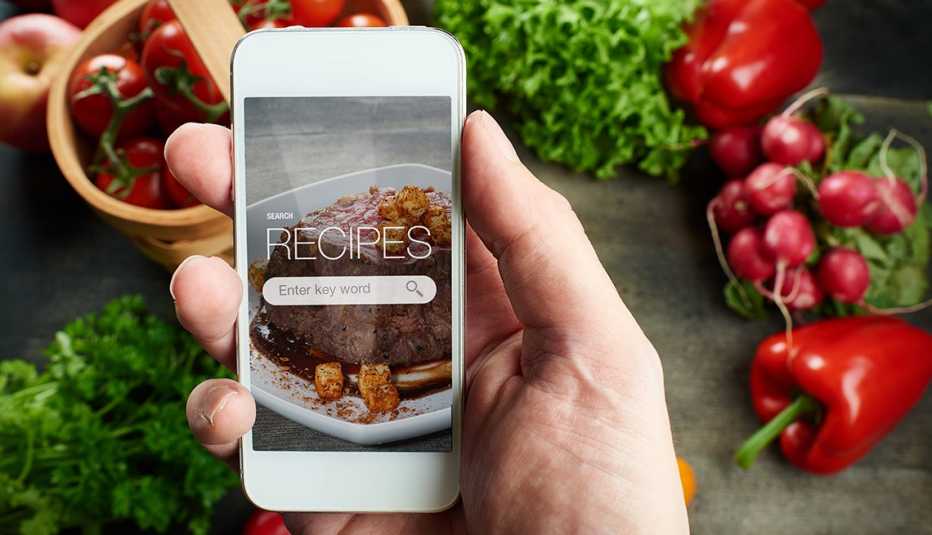Staying Fit


Just as an e-reader or tablet doesn’t replace a paperback or hardcover book — it simply adds a fresh way to enjoy reading — recipe apps and websites are useful complements to the cookbooks that line our pantry shelves.
In fact, online and physical recipe resources can coexist — beautifully. Sure, cookbooks in print make cherished gifts, whether with a personal inscription on the inside flap or when worn with love and oil stains, bent corners and penciled-in comments, and handed down from generation to generation. But apps and websites viewed on your laptop, phone or tablet can take your cooking journey to new destinations. Technology offers several tasty benefits.


AARP Membership— $12 for your first year when you sign up for Automatic Renewal
Get instant access to members-only products and hundreds of discounts, a free second membership, and a subscription to AARP the Magazine.
The good news is you need not be tech savvy at all to download apps from the Apple App Store, Google Play or Windows Store. You can bookmark websites for recipes, and social media platforms such as TikTok and Pinterest also offer delicious meal ideas.
Here’s why you should consider adding a little tech to your recipe repertoire.
1. Apps and websites are free to use
Whether their recipes come from a community of fellow cooks or some of the world’s top chefs and TV personalities, most apps and websites don’t cost anything to use. This is especially attractive to those who can’t afford to buy cookbooks.
And if you want to build your own physical cookbook, you can print the recipes you like and pick up a three-hole punch and a binder from the dollar store.
2. The databases are large and searchable
Recipe sites and apps often house tens of thousands of recipes, compared to the hundred or so in most cookbooks, so you’re bound to find something that looks interesting.
Apps, websites and social media platforms let you search by keywords, like “chicken wings” or “veggie burger.” You can also browse by meal, course and many other categories. Almost every kind of cuisine is available, as are recipes based on dietary preferences, such vegan and vegetarian, and restrictions, such as peanut allergies and lactose or gluten intolerance.
3. You can adjust the results
Many recipe websites and apps let you select whatever ingredients you have on hand and then offer suggestions for what you can make with them.


































































More on Home and Family
12 Free Apps You Probably Have or Should Know About
These are among the most popular downloads in Apple's and Google's app stores
5 Food and Cooking Podcasts You'll Love
Tune in to culinary storytelling that will inspire and transport youToday's Smart Home Tech Can Help You Age in Place
Experts say new products can give you convenience, safety